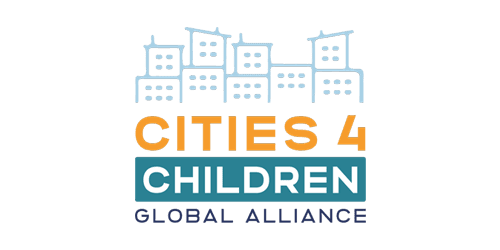55% of world’s population population were living in urban areas in 2018 and this will increase to 70% by 2050, adding an additional 2.5 billion people to urban areas.
Cities for Children and Youth
Meera (10) from India
Meera has recently started going back to school after being supported by a shelter for children and families without a home, which is funded indirectly through Save the Children via local partners.
THE URBAN HUB AT SAVE THE CHILDREN
We want to inspire people, governments, policy makers, organizations and networks to play their part in creating change towards a better urban future for children.
The work of the Urban Hub at Save the Children Switzerland has four main pillars:
PARTNERSHIPS FOR IMPACT
Partnerships to coordinate and build on different organization’s strengths are key to achieving impact in urban contexts where there are many actors, often with overlapping responsibilities and structures.
PROJECTS FOR THE MOST MARGINALIZED CHILDREN IN CITIES
Projects for most marginalized children and youth living in cities are implemented in collaboration with local partners, take the views and concerns of children seriously and are based on best practices.
RESEARCH AND KNOWLEDGE
Carrying out relevant research and making knowledge accessible to practitioners, youth and government officials. To ensure information is available in accessible formats knowledge products are shared in short blogs on key issues as well as longer publications that offer deeper engagement with important themes, and tools for creating greater impact.
ADVOCACY AND COMMUNICATIONS
Advocacy and communications efforts aim to amplify the voices of children and youth living in cities, this raises awareness and develops an understanding on issues faced by children and youth.
GLOBAL ALLIANCE – CITIES 4 CHILDREN
 The Global Alliance – Cities 4 children is an interdisciplinary alliance of 22 organisations working together to ensure that child rights are firmly embedded in the urban agenda.
The Global Alliance – Cities 4 children is an interdisciplinary alliance of 22 organisations working together to ensure that child rights are firmly embedded in the urban agenda.
The alliance was launched at the World Urban Forum in 2020 and is led and chaired by Save the Children.
The Global Alliance was established to tackle the huge challenges and numerous issues faced by children living in urban areas, especially the most marginalized. We believe that together, we will achieve greater collective impact and influence and have a louder voice in transforming the narrative on urban areas fit for children.
Visit the Alliance Website (https://cities4children.org) and follow the alliance on
Global organizations working in urban areas acknowledge that collaboration would greatly increase the impact of our work, and that more collaboration is needed.
![Sarah Sabry – Global Lead Urban at Save the Children Switzerland Sarah Sabry - Global Lead Urban at Save the Children Switzerland]()
